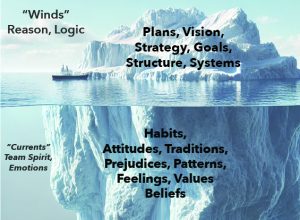Few employees truly understand IT and organizational priorities. Studies show only 5-30% grasp how these affect their work.
Leaders often ask, “Why aren’t employees taking initiative?”
The answer is simple: If they don’t understand the strategy, they can’t act on it.
The solution isn’t to blame employees. As a leader, you need to communicate more effectively. Focus on building understanding, not just sharing information.
As leaders, CIOs must develop emotional intelligence
Employees don’t leap out of bed and rush to work to be a part of cost-savings and digital transformation. Don’t start with the “what.” Begin with an inspiring vision and explain the “why.”
The “why” is crucial. It:
- Supports the vision
- Drives action
- Helps employees understand the direction
Even if staff don’t agree, they’ll grasp the reasoning.
There’s a Reason for the Change, So Communicate That Reason
Why It Matters
Change provokes strong emotional responses in people. It means changing established work practices, even reporting structures.
CIOs understand the technical implications of moving to digital. But we also need to lead people through change, which means dealing with people’s emotions. Thus the need for emotional intelligence. According to Psychology Today, “Emotional intelligence is the ability to identify and manage your own emotions and the emotions of others.” Our focus should be on “people skills” more than on technical skills.
This requires communication, a narrative tailored for different groups. Use analogies to explain complex ideas in simple terms. Acknowledge challenges, but focus on the benefits. Encourage dialogue, asking for questions and feedback. Ensure all leaders are sharing a consistent message.
- Implementing Your Narrative
- Communicate through multiple channels: meetings, emails, intranet, etc.
- Demonstrate new systems when possible.
- Celebrate milestones along the way.
- Be ready to adapt your narrative as needed.
The Payoff
A strong narrative can:
- Reduce resistance to change
- Speed up adoption of new systems
- Improve morale
- Align efforts across the organization
- Foster innovation
Remember: Even the most advanced IT changes are implemented by and for people. A good narrative doesn’t just manage change—it embeds it into your company’s culture.

